Featherfin catfish - Synodontis eupterus
Scientific name: Synodontis eupterus
Common name: Featherfin catfish
Family: Mochokidae
Usual size in fish tanks: 18 - 22 cm (7.09 - 8.66 inch)
014
Recommended pH range: 6 - 7.5
Recommended water hardness: 12 - 16°N (214.29 - 285.71ppm)
0°C 32°F30°C 86°F
Recommended temperature range: 22 - 26 °C (71.6 - 78.8°F)
The way how these fish reproduce: Spawning
Where the species comes from: Africa
Temperament to its own species: peaceful
Temperament toward other fish species: peaceful
Usual place in the tank: Bottom levels
Origin
The Featherfin Catfish (Synodontis eupterus) originates from Africa, thriving in freshwater rivers and streams across Nigeria, Sudan, Chad, and Ghana. These waterways are slow-moving and often feature sandy or muddy substrates. Driftwood, submerged vegetation, and rocky outcrops provide shelter and hiding spots. These conditions shape their natural behaviors, such as foraging at the bottom and seeking refuge during the day.
In the wild, these fish experience seasonal variations in water levels and temperature, influencing their adaptability to different environments in captivity.
Lifespan
With attentive care, Synodontis eupterus can live up to 18 years in an aquarium. Achieving this lifespan requires stable water conditions, a balanced diet, and minimizing stress. Regular monitoring of water parameters, such as ammonia and nitrate levels, is essential to ensure their longevity. Periodic health checks can help identify and address potential issues early.
General Information
The Featherfin Catfish, affectionately called the "Squeaker Catfish" for its unique ability to produce audible sounds, is a fascinating addition to any aquarium. These hardy fish can adapt to various water conditions, making them a suitable choice for experienced aquarists. However, maintaining excellent water quality and providing ample space is crucial for their well-being.
Featherfin Catfish are nocturnal bottom-dwellers that prefer dimly lit environments with plenty of hiding places. Aquascaping with rocks, driftwood, and caves mimics their natural habitat and helps them feel secure. Adding floating plants can further reduce light intensity, promoting natural behaviors. While generally peaceful, they may prey on smaller fish, so select tankmates carefully.
Food and Feeding
The Featherfin Catfish is an omnivore that thrives on a varied diet. High-quality sinking pellets, algae wafers, and flakes should form the base of their diet. Supplement their meals with protein-rich treats such as bloodworms, brine shrimp, or foods enriched with spirulina. These supplements enhance their coloration and overall health.
Initially shy, these catfish may take time to acclimate to aquarium life but often grow bolder over time, even feeding during daylight. Feed them twice daily in small portions, ensuring food reaches the bottom where they forage.
Sexing
Sexing Synodontis eupterus can be tricky. Mature females tend to be rounder and fuller-bodied, especially when carrying eggs. Advanced aquarists may examine the genital papillae to distinguish males from females, but this requires expertise to avoid stressing the fish.
For most hobbyists, visual differences in body shape are the easiest indicator.
Breeding
Breeding Featherfin Catfish in home aquariums is rare and challenging. In their natural habitat, they likely spawn during the rainy season when water levels and temperatures fluctuate. To replicate these conditions, perform frequent water changes, slightly lower the water temperature, and provide high-protein foods to condition the fish.
Providing plenty of hiding spots and a spacious tank may encourage breeding behaviors, but successful spawning and fry rearing are not guaranteed.
Tank Requirements
These fish require a minimum tank size of 200 liters (~50 gallons) for a single specimen. Ideal water parameters include:
- Temperature: 22-26°C (71.6-78.8°F)
- pH: 6.0-7.5
- Water Hardness: 12-16°N
Use fine sand or smooth gravel as a substrate to protect their sensitive barbels. Decorate the tank with driftwood, rocks, and caves to create hiding spots. Strong filtration is crucial to maintain clean water, and regular water changes prevent harmful nitrate buildup.
Suitable Tankmates
The Featherfin Catfish is generally peaceful but may become territorial in cramped conditions. Suitable tankmates include:
- Large, peaceful cichlids
- Other bottom-dwelling catfish species
- Large tetras like Congo Tetras
- Peaceful barbs, such as Tinfoil Barbs
Avoid keeping them with small fish that might be mistaken for food or aggressive species that could harass them.
Short Description
The Featherfin Catfish (Synodontis eupterus) is a striking bottom-dwelling species from Africa, known for its intricate patterns and "squeaking" sounds. It thrives in spacious tanks with hiding spots and clean water. While territorial at times, it is compatible with larger, peaceful tankmates. With a potential lifespan of up to 18 years, it is a rewarding species for experienced aquarists.
Pictures
Bought by aqua-fish.net from jjphoto.dk.
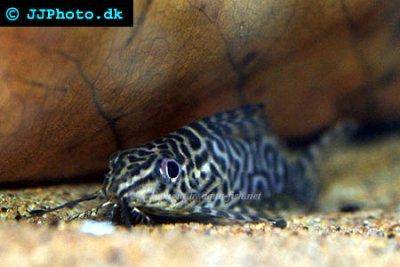







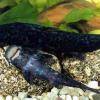 Euchilichthys
Euchilichthys  Angel
Angel 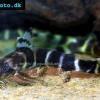 Brichard’s
Brichard’s  Decorated
Decorated 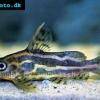 Orangestriped
Orangestriped 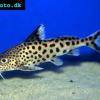 Cuckoo
Cuckoo 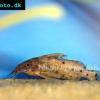 Lace
Lace  Upside-down
Upside-down  One
One 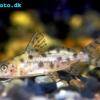 Ocellated
Ocellated 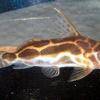 Robert’s
Robert’s